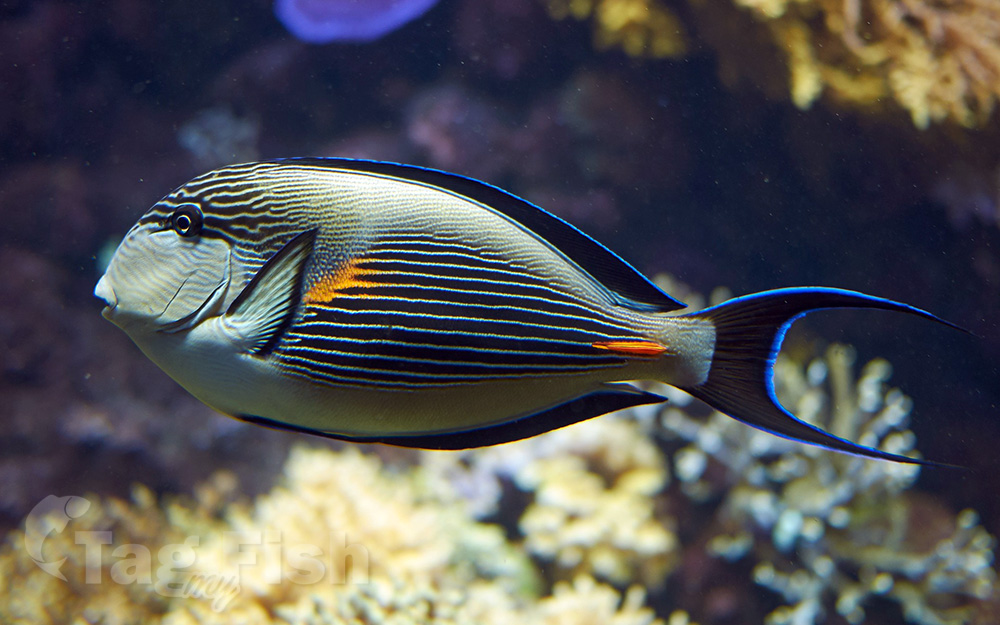Sohal surgeonfish
(Acanthurus sohal)

Classification
General data
The sohal surgeonfish has its dorsal fin supported by 9 spines and 30 or 31 soft rays while the anal fin is supported by 3 spines and 28 or 29, typically 29, soft rays. The depth of the body is around half the standard length.
This fish has longitudinal, thin black stripes separated by greenish olive stripes and these join together at the spine on the caudal peduncle. The stripes are finer and more sinuous on the upper body but broader and straighter on the lower body. The stripes are greyer on the upper head and nape. The lower head and ventral surface of the body are pale with faint grey and greenish grey longitudinal lines.
The dorsal, anal and pelvic fins are black with vivid blue margins, there is a large patch of orange on the body underneath the pectoral fin and the sheath of the spine on the caudal peduncle is orange. The caudal fin is lunate.
This species has a maximum published total length of 40 cm (16 in).
The sohal surgeonfish is endemic to the northwestern Indiian Ocean where it is found in the Red Sea, east along the coast of the Arabian Peninsula to the Persian Gulf.
It has been found in the Mediterranean Sea, in 2017 and 2018, and reached there either by release from an aquarium or by Lessepsian migration through the Suez Canal from the Red Sea.
It is usually found on the outer edges of fringing reefs that are exposed to surge, typically down to depths of around 20 m (66 ft).










